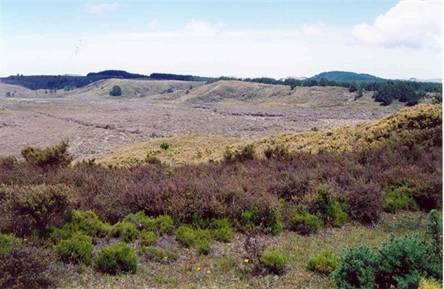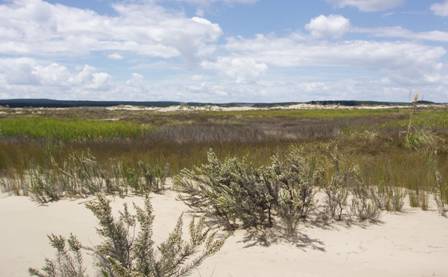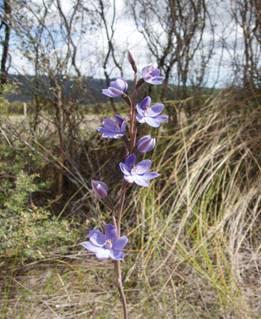Biodiversity
Within this section…
Environment Fund
The Council's Environment Fund is open to individuals and voluntary groups with eligible biodiversity projects on private land. Most successful projects are funded at 50% of their total cost. Projects must be of long-term benefit to the local environment and be environmentally sustainable.
In 2008-09, 18 Council staff worked with a total of 206 projects across the region. Of these projects, 169 were approved in the 2008-09 round of funding. A further 37 projects were carried over from 2007-08. Only four projects were unfinished this year and these will be carried over to 2009-10. In total, $646,256 was spent, $51,248 of which came from the National Biodiversity Condition Fund.
Priority Wetlands Project
As a result of drainage and land disturbance activity, only 5.3% of Northland's wetlands remain. Northland has several different types of wetlands, some of which are nationally rare.

Photo: Maitahi Scientific Reserve – one of the largest and best examples of a fen habitat – is one of Northland's significant wetlands.
Rules in the Regional Water and Soil Plan for Northland protect significant wetlands. However, there has never been a full survey to find out where these wetlands exist in the region. In order to protect the best of what remains, it is necessary to know where the highest value and most unique and irreplaceable wetlands are sited.
In 2008, the Council launched a project to record and map high priority wetlands in Northland. A ‘Biodiversity Wetlands' database has been created to hold this information and this database will be made available to planners, landowners and land managers to help protect these valuable habitats, and to help target funding and advice for their protection.

Photo: A coastal wetland in Pouto – one of Northland's unique wetlands
The first phase of the project is now near completion. Wetlands recorded during the Department of Conservation's (DOC) Protected Natural Areas Programme have been uploaded onto the database (nearly 350 sites) and additional wetland surveys are being undertaken by the Council to supplement this information. It is hoped that this work will be complete by October 2009.
The next phase of the project involves scoring and ranking each wetland according to its value. This information will be used to shortlist around 200 of Northland's ‘top' wetlands (those with the highest biodiversity value), regardless of ownership, protection status, wetland type, size or condition. Draft lists of the ‘top' wetlands will be produced in the following categories:
· Top Northland wetlands;
· Top wetlands by ecological district; and
· Top wetlands by type (swamp, marsh, fen, bog, coastal, gumland etc).
Once these lists are drafted, they will be given to other organisations, such as DOC and district councils, for review and comment. The landowners of listed wetlands will also be consulted. Protection and management needs for each wetland chosen will then be discussed with all landowners, along with funding opportunities and possible formal protection mechanisms.

Photo: Rare plant species are a feature of Northland's wetlands. The flower (above) is a sun orchid, found in Kerikeri. Many species of orchid are found only in Northland, particularly in wetlands associated with gum land
Biodiversity Website Project
In 2008, the Council applied for funding to construct a Geographic Information System (GIS) linked Northland Biodiversity Website on behalf of Biodiversity Northland. The funding was approved from TFBIS (Terrestrial and Freshwater Biodiversity Information Systems), which is a national funding pool.
The project will make important information about Northland's biodiversity, such as the location of species or habitats, available on the internet. In order to protect our rarest species, however, there will be different levels of access for different users, depending on the sensitivity of the data.
The Northland Biodiversity Website is a pilot for the ‘One Land Project', a national initiative to bring together information from a number of key agencies in one website, where it can be accessed by everyone. Work on the Northland Biodiversity website was scheduled to commence in September 2009 and the website is due to be launched late 2010.
In New Zealand there are 120 land-based animals under threat of extinction, of which 36 are found in Northland. Five of the freshwater and marine animals at greatest risk of extinction are also found in the region. In Northland, 23,202 hectares of land is classified as National Priority One Habitat – identified by the Ministry for the Environment as most in need of protection.
Find out more about Northland's land and biodiversity at www.nrc.govt.nz/land
